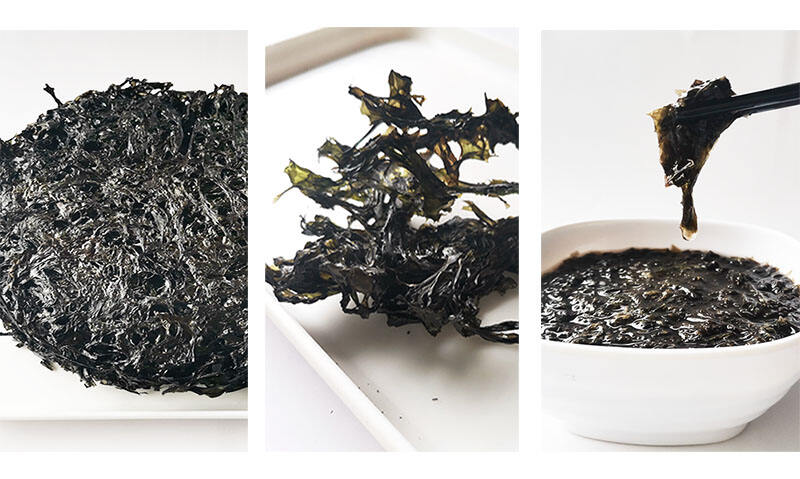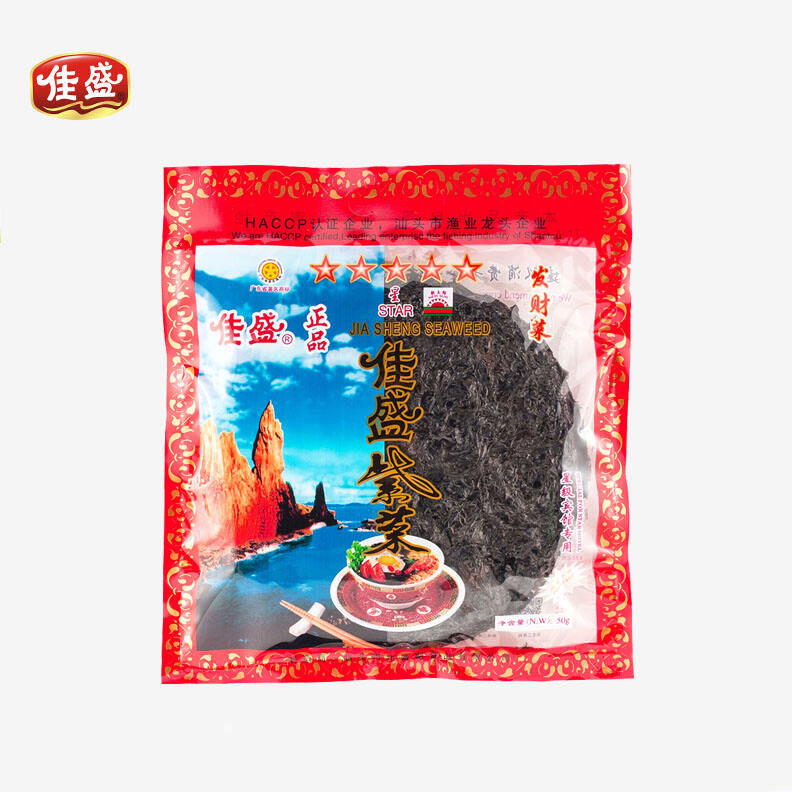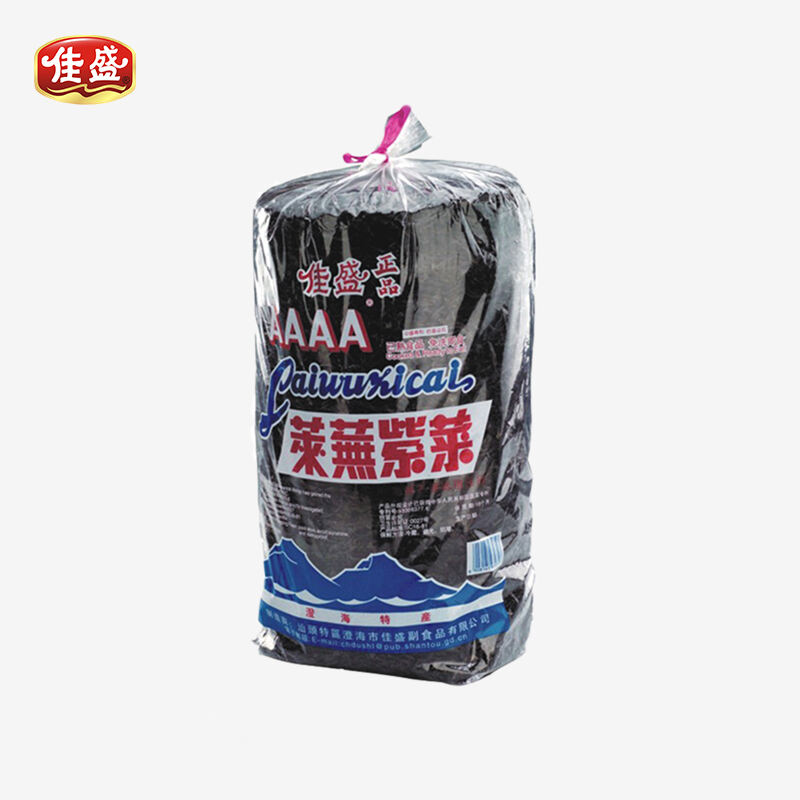Jan 10,2025
Seaweed foods refer to edible varieties of seaweed that humans consume for culinary and nutritional benefits. These sea plants, often used as integral components in many dishes, are treasured for their unique flavors and textures that enhance various recipes. Particularly in Asian cuisines, seaweeds have been culinary staples for centuries, featuring prominently in dishes such as sushi, soups, and salads. This rich culinary heritage underscores the versatility of seaweed foods in enhancing global gastronomic experiences.
Various edible seaweeds, like nori, wakame, and kombu, each offer distinctive flavors and nutritional profiles. Nori, a type of red algae, is perhaps best known for wrapping sushi rolls and is packed with vitamins A and C, and B12. Wakame, often found in seaweed salads and miso soup, provides a silky texture and contains high levels of iodine and essential vitamins. Kombu serves as a base for dashi, a Japanese soup stock, and is rich in iodine and dietary fiber. Together, these seaweeds provide an array of beneficial nutrients, making them a valuable addition to any diet.
Seaweed is a powerhouse of nutrition, packed with essential vitamins and minerals. It provides vitamins such as A, C, E, and K, each playing a crucial role in maintaining health. For instance, Vitamin A is vital for eye health, while Vitamin C boosts the immune system. Seaweed also contains a wealth of minerals, including iodine—essential for thyroid function—as well as iron, calcium, and magnesium. These minerals are vital for various bodily functions, from managing energy levels to maintaining healthy bones.
Additionally, seaweed is known for its high antioxidant content, which helps combat oxidative stress. Antioxidants in seaweed include compounds like flavonoids and carotenoids, which have been shown to protect cells from damage. One particular compound, fucoxanthin, found predominantly in brown seaweeds like wakame, demonstrates impressive antioxidant capacity, making it a valuable addition to the diet for reducing the risk of diseases such as heart disease and diabetes.
Moreover, seaweed is rich in dietary fiber, promoting digestive health and aiding in weight management. Fiber in seaweed can make up 35% to 60% of its dry weight, significantly higher than most fruits and vegetables. This fiber supports gut health by serving as food for beneficial gut bacteria and contributes to a feeling of fullness, aiding in weight control. The presence of sulfated polysaccharides in seaweed further supports the growth of good gut bacteria, enhancing digestive health and overall well-being. By incorporating seaweed into your diet, you can enjoy its myriad health benefits.
Incorporating seaweed into your daily meals can be an enjoyable and nutritious endeavor. Seaweed can easily be added to salads for a crunchy texture or blended into smoothies for a nutritious boost. You might consider using nori sheets as a wrap for your favorite fillings or adding wakame to soups for an enriching taste. Simple recipes, such as a seaweed and avocado salad, seaweed miso soup, or even crispy seaweed snacks, offer delicious ways to enjoy the multiple benefits of seaweed in your diet.
Seaweed is particularly beneficial for heart health. Studies in health journals emphasize its ability to lower cholesterol levels, thus reducing the risk of heart disease. The polysaccharides in seaweed have been shown to lower blood pressure and promote heart health. Research has revealed that consuming seaweed can decrease both total and LDL cholesterol levels, potentially lowering the likelihood of cardiovascular issues.
Moreover, the iodine content in seaweed offers considerable benefits for thyroid function. Iodine is crucial for hormone production, and seaweed's capacity to absorb high levels of iodine from the ocean makes it an abundant source. This is vital for metabolic regulation and overall hormonal balance. Enhancing your diet with seaweed can thus help maintain a healthy thyroid function and support metabolic activities in the body.

Seaweed foods come in various types and packaging sizes, each serving different culinary applications and preferences. You can find dried seaweed in convenient options ranging from 50g to 1KG, catering to both household needs and business operations. For example, 50g packages are perfect for individual use and experimentation in cooking, while 1KG bags serve larger families or restaurants looking to integrate seaweed into their menu consistently. This flexibility in packaging ensures seaweed's adaptability in different markets and food settings.
Additionally, the cultural significance and popularity of specific seaweeds vary widely. Wakame, often found in Japanese seaweed salads and miso soups, is appreciated for its subtle sweetness and silky texture. Kombu holds a revered place in Japanese cuisine as a key ingredient in dashi soup stock, highlighting it in soups and stews worldwide. On the other hand, Nori is globally recognized for wrapping sushi, making it a staple in both Japanese cuisine and Western recreations.
To ensure consumers receive the best quality, many seaweed products come with certifications or are sourced through sustainable practices. These credentials not only guarantee the product's integrity but also add a layer of trust for consumers and businesses, especially important in B2B transactions, where quality and reliability are paramount. With certifications, customers can enjoy seaweed products not only as nutritious additions but also as sustainable choices for their culinary offerings.


By understanding the variations in seaweed types and their culinary contexts, consumers and businesses alike can make informed choices about integrating these nutritious and culturally rich ingredients into their meals.
Preparing seaweed foods can be simple and rewarding. Dried seaweed, a common form, needs rehydration before use. To do this, soak it in warm water for about 10-15 minutes until soft and pliable. Once rehydrated, it can be added to salads, soups, and even stir-fries, offering a unique texture and taste. For a savory addition to your meal, try incorporating nori sheets as an alternative to wraps or crumbled over salads for an umami kick.
Storage methods are crucial in maintaining the freshness and flavor of dried seaweed. It is best to keep dried seaweed in airtight containers away from light and moisture. This not only ensures its longevity but also preserves its nutrient content. When stored properly, dried seaweed can last for several months, making it a versatile pantry staple. By following these preparation and storage tips, you can easily integrate the nutritional benefits of seaweed into a variety of dishes.

When considering seaweed consumption, it's important to be aware of potential risks such as heavy metal contamination. Some seaweed species can absorb substantial amounts of heavy metals, including arsenic, cadmium, and mercury, due to water pollution. The FDA provides guidance on acceptable levels in fresh seaweed, though consumers should be cautious with unregulated supplements. To mitigate these risks, it is advisable to consume seaweed sourced from reputable suppliers and certified for safety.
Another consideration is the risk of excessive iodine intake, especially for individuals with thyroid-related conditions like hyperthyroidism. While iodine is essential for thyroid health, overconsumption can lead to thyroid dysfunction due to the high iodine content in certain seaweeds like kelp and kombu. These varieties should be consumed in moderation to avoid potential thyroid issues.
Finally, seaweed can also cause allergic reactions in some individuals. If you experience symptoms such as itching or swelling after consuming seaweed, it is crucial to consult with a healthcare professional. People with known allergies to seafood or specific types of seaweed should exercise caution and consider seeking advice before introducing seaweed into their diet.